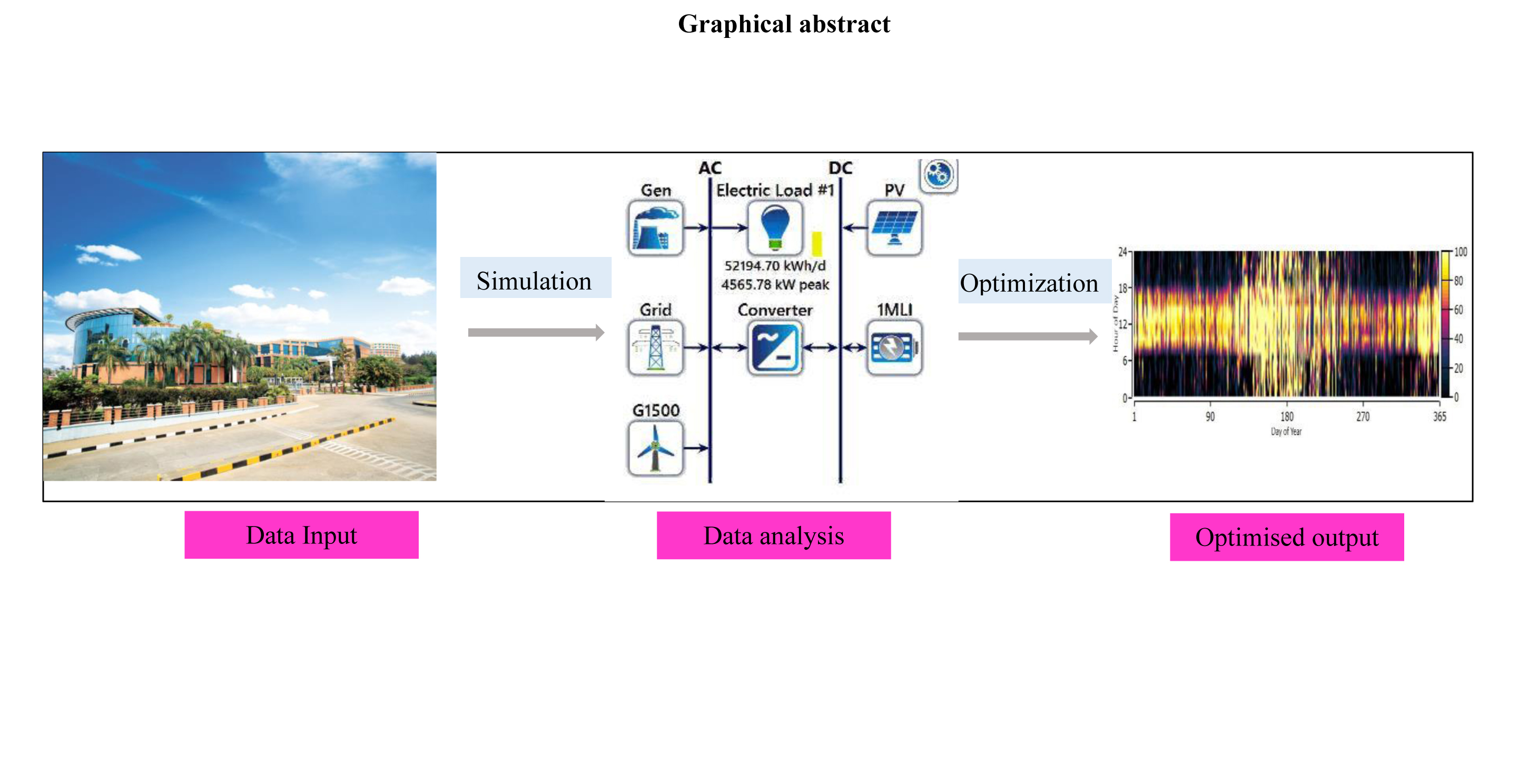| Numéro |
Sci. Tech. Energ. Transition
Volume 78, 2023
|
|
|---|---|---|
| Numéro d'article | 13 | |
| Nombre de pages | 12 | |
| DOI | https://doi.org/10.2516/stet/2023008 | |
| Publié en ligne | 5 mai 2023 | |
Regular Article
Hybrid solar, wind, and energy storage system for a sustainable campus: A simulation study
1
Department of Environmental Engineering, Eidg. Techn. Hochschule Zürich, Rämistrasse 101, 8092 Zürich, Switzerland
2
Department of Chemical Engineering, Manipal Institute of Technology, Manipal Academy of Higher Education, Manipal, 576104 Karnataka, India
3
Low/Zero Carbon Energy Technologies Laboratory, Faculty of Engineering and Architecture, Recep Tayyip Erdogan University, Zihni Derin Campus, 53100 Rize, Turkey
4
Department of Mechanical Engineering, Faculty of Engineering and Architecture, Recep Tayyip Erdogan University, Zihni Derin Campus, 53100 Rize, Turkey
5
Faculty of Mechanical and Automobile Engineering Technology, Universiti Malaysia Pahang, Pekan, 26600 Pahang, Malaysia
6
Centre for Research in Advanced Fluid & Processes (Fluid Centre), Universiti Malaysia Pahang, Paya Basar, 26300 Pahang, Malaysia
7
Energy Centre, Maulana Azad National Institute of Technology, 462003 Bhopal, India
* Corresponding authors: shan.priya@manipal.edu; sudhakar@ump.edu.my
Received:
30
March
2022
Accepted:
22
March
2023
The reliance on grid electricity generated from fossil fuels in many countries continues to contribute to annual CO2 emissions. Implementing renewable energy systems helps reduce the carbon footprint and enhances local grid stability, particularly in areas with high demand where power outages are frequent. This study used the Hybrid Optimization of Multiple Energy Resources (HOMER) software to determine the most cost-effective composition of a Hybrid Renewable Energy System (HRES). Simulation results indicate that a system comprising a 3007 PV array, two 1.5 MW wind turbines, and a 1927 kW converter is most suitable. Combining solar panels and wind turbines remains the most economically feasible option for on-site electricity production. The study demonstrates that installing a hybrid renewable energy system is viable on an academic campus, with an initial investment cost of US $6.58 million and yearly operational costs of US $1.38 million, which is 40.8% lower than the current system. The project payback time is estimated to be 10.11 years. These findings may be used to recommend similar systems in other regions with comparable climatic conditions. The positive monetary effects may incentivize policymakers to implement comparable systems, contributing to a carbon-neutral goal.
Key words: Green campus / HOMER software / Technical analysis / Economic analysis / Hybrid energy
Note to the reader: The corresponding authors’ emails was corrected on 23 May 2023.
© The Author(s), published by EDP Sciences, 2023
 This is an Open Access article distributed under the terms of the Creative Commons Attribution License (https://creativecommons.org/licenses/by/4.0), which permits unrestricted use, distribution, and reproduction in any medium, provided the original work is properly cited.
This is an Open Access article distributed under the terms of the Creative Commons Attribution License (https://creativecommons.org/licenses/by/4.0), which permits unrestricted use, distribution, and reproduction in any medium, provided the original work is properly cited.
Les statistiques affichées correspondent au cumul d'une part des vues des résumés de l'article et d'autre part des vues et téléchargements de l'article plein-texte (PDF, Full-HTML, ePub... selon les formats disponibles) sur la platefome Vision4Press.
Les statistiques sont disponibles avec un délai de 48 à 96 heures et sont mises à jour quotidiennement en semaine.
Le chargement des statistiques peut être long.





